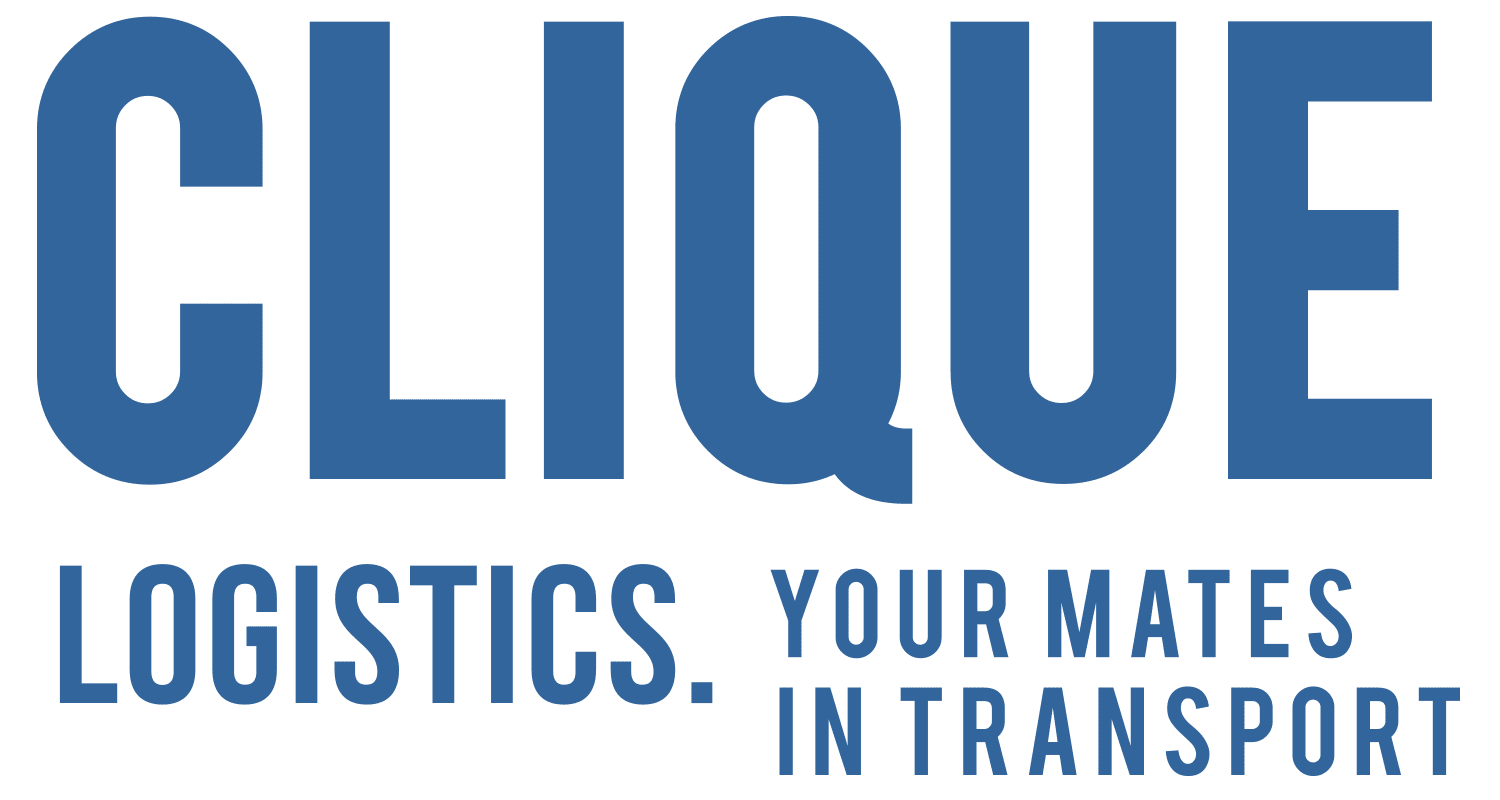Is it true that outsourcing all your logistics operations to a single entity can streamline your supply chain? Many businesses are turning to Fourth Party Logistics (4PL) for this very reason. By consolidating various logistics services, you might just find the efficiency and flexibility you’ve been seeking. But what are the specific advantages of this model, and how does it differ from traditional logistics approaches? Understanding the subtleties could change the way you manage your supply chain.
Understanding 4PL
When you think about Fourth Party Logistics (4PL), it’s crucial to grasp its definition and key concepts.
This model evolved from traditional 3PL, shifting towards a more integrated approach that emphasises thorough supply chain management.
Understanding these differences can help you appreciate how 4PL can improve your logistics strategy.
Definition and Key Concepts
Fourth Party Logistics (4PL) represents a transformative approach to supply chain management, allowing you to streamline operations by integrating various logistics services into a unified strategy.
In this model, a single organisation manages all logistics operations on your behalf, serving as your main point of contact with multiple providers. Unlike third-party logistics (3PL), which focuses on specific services, 4PL oversees the entire supply chain, including procurement, warehousing, transportation, and order fulfilment.
4PL providers typically don’t own physical assets, enabling them to offer unbiased, strategic solutions. By managing logistics comprehensively, you can achieve cost reductions, improve service levels, and adapt quickly to market changes, ultimately enhancing your logistics management capabilities.
The Evolution of 4PL from 3PL
As businesses faced the growing complexities of global supply chains, they realised traditional third-party logistics (3PL) models weren’t enough to meet their needs. This realisation led to the emergence of fourth-party logistics (4PL), which integrates multiple logistics services under one provider.
Unlike 3PL, 4PL doesn’t own physical assets but utilises technology and expertise to manage the entire supply chain. This evolution reflects current 4PL trends, emphasising strategic oversight and coordination.
Companies now seek thorough solutions that address 4PL challenges, such as improving responsiveness and enhancing visibility. With 4PL, you can optimise logistics operations and focus on your core business activities, ultimately leading to better efficiency and cost reduction in today’s complex market environment.
Advantages of 4PL
When you consider the advantages of 4PL, you’ll find it offers thorough supply chain management that streamlines operations effectively.
Its scalability and flexibility mean you can adapt to changing market demands without hassle.
Plus, you’ll benefit from improved efficiency and cost reduction, giving you better strategic oversight and enhanced visibility across your logistics process.
Comprehensive Supply Chain Management
While managing a complex supply chain can be challenging, leveraging Fourth Party Logistics (4PL) provides a streamlined solution that simplifies the entire process.
With comprehensive oversight, 4PL improves efficiency in inventory management and promotes supply chain sustainability. By acting as a single point of contact, you reduce the complexity of dealing with multiple logistics partners, leading to cost savings and improved communication.
The integration of logistics tasks promotes better coordination among stakeholders, crucial for logistics innovation. Plus, utilising historical data and advanced analytics, 4PL allows you to forecast customer demand accurately, enabling swift responses to market changes.
Ultimately, this approach boosts customer satisfaction and lets you focus on your core business activities while outsourcing logistics management.
Scalability and Flexibility
By leveraging Fourth Party Logistics (4PL), you gain access to scalable and flexible logistics solutions tailored to your business needs.
This model allows you to adjust your logistics operations effortlessly, accommodating seasonal demand fluctuations without hefty infrastructure investments.
With 4PL, you can swiftly adapt your supply chain optimisation strategies through logistics partnerships, ensuring your operations stay aligned with market conditions.
The flexibility of engaging providers on a contract basis means you can make quick adjustments in your supply chain management without long-term commitments.
This integrated approach not only improves coordination across logistics functions but likewise enhances your overall agility, enabling your business to respond instantly to changes and focus on core operations while enjoying a robust logistics framework.
Enhanced Efficiency and Cost Reduction
Improved efficiency and cost reduction are key advantages of utilising Fourth Party Logistics (4PL) in your supply chain. By opting for 4PL, you streamline logistics processes, minimising the reliance on multiple service providers.
This thorough overview allows for effective supply chain optimisation, ensuring you can forecast customer demand accurately and reduce excess inventory. Additionally, consolidating logistics services cuts down on negotiation and management expenses, translating into significant cost savings.
The centralised approach of 4PL improves your responsiveness to market changes, allowing for quick adaptations and informed strategic decisions. By leveraging technology, 4PL providers track and analyse performance, identify bottlenecks, and optimise logistics strategies, ultimately enhancing delivery times and boosting customer satisfaction.
Strategic Oversight and Improved Visibility
As you investigate Fourth Party Logistics (4PL), you’ll find that it provides crucial strategic oversight and improved visibility throughout the entire supply chain.
With 4PL, you gain a comprehensive view, ensuring strategic alignment across procurement, warehousing, transportation, and order fulfilment.
The visibility improvement offered by advanced analytics and real-time technologies allows you to make well-informed choices quickly, adapting to market changes as they arise.
Centralised data management streamlines communication, reducing delays and boosting efficiency.
Predictive analytics further optimises inventory levels and forecasting accuracy, leading to significant cost savings.
Through continuous performance analysis, 4PL providers identify bottlenecks and opportunities for improvement, elevating your supply chain’s resilience and responsiveness.
Embracing 4PL means gaining control and insight like never before.
4PL vs 3PL
When you’re considering logistics options, it’s essential to understand the key differences between 3PL and 4PL.
While 3PL focuses on executing specific logistics services, 4PL takes a broader approach by managing the entire supply chain strategy.
Knowing when to opt for 4PL over 3PL can significantly impact your business’s efficiency and adaptability.
Key Differences
While both Fourth Party Logistics (4PL) and Third Party Logistics (3PL) play vital roles in supply chain management, their functions and responsibilities differ significantly.
4PL manages the entire supply chain, integrating procurement, warehousing, transportation, and order fulfilment, while 3PL focuses primarily on specific logistics services like transportation and storage.
A major distinction lies in asset ownership; 3PL providers typically own warehouses and fleets, whereas 4PLs often operate as non-asset-based entities, leveraging technology and partnerships.
Furthermore, 4PL emphasises strategic planning and logistics optimisation, acting as a lead logistics provider with greater decision-making authority.
This all-encompassing approach improves supply chain integration and reduces complexities, empowering businesses to streamline operations and focus on core activities.
When to Opt for 4PL Over 3PL
Choosing between Fourth Party Logistics (4PL) and Third Party Logistics (3PL) can significantly impact your supply chain efficiency.
If your business faces complex supply chain challenges requiring thorough management—like procurement, warehousing, and transportation—opt for 4PL. This model excels in supply chain optimisation, offering strategic planning and coordination across multiple logistics partners that 3PL may not effectively address.
When you aim to streamline communication and reduce the number of logistics partners, 4PL acts as a single point of contact, simplifying logistics partner selection.
Furthermore, if you’re anticipating growth and need adaptable solutions, 4PL provides the flexibility to adjust to changing market conditions and evolving business needs, enhancing operational efficiency and reducing costs.
Key Components of 4PL
When you investigate the key components of 4PL, you’ll notice the emphasis on integration and collaboration among various logistics functions.
Technology-driven operations play a vital role in optimising these processes, allowing for real-time visibility and better decision-making.
Furthermore, customisation and personalisation guarantee that solutions are tailored to meet your specific business needs.
Integration and Collaboration
Integration and collaboration are essential components of Fourth Party Logistics (4PL) that promote seamless coordination among various logistics service providers.
By utilising collaborative platforms, you can manage multiple 3PL partners effectively, ensuring procurement, storage, and transportation processes work together smoothly. This centralised approach acts as a control tower, optimising supply chain operations and improving efficiency.
As you capitalise on logistics synergies, you’ll notice reduced complexity in managing logistics functions, ultimately lowering costs.
Additionally, improved integration capabilities mean your logistics strategies can adapt dynamically to changing market conditions, boosting responsiveness and customer satisfaction.
Technology-driven Operations
Effective integration and collaboration lay the groundwork for technology-driven operations in Fourth Party Logistics (4PL).
By leveraging advanced data analytics, you can optimise your supply chain processes, ensuring well-informed choices and quick responses to market changes. Incorporating Internet of Things (IoT) devices allows for real-time tracking of inventory and shipments, significantly enhancing operational efficiency.
Moreover, machine learning algorithms analyse historical data to improve demand forecasting and inventory management accuracy. Automation technologies like robotic process automation (RPA) streamline repetitive tasks, reducing human error and boosting efficiency.
Collaborative platforms encourage seamless communication and data sharing among all supply chain stakeholders, enhancing coordination and integration across multiple service providers—key components of operational innovation in 4PL.
Customisation and Personalisation
Customisation and personalisation stand at the forefront of Fourth Party Logistics (4PL), transforming how businesses engage with their supply chains. By leveraging data-driven solutions, 4PL providers tailor logistics strategies to meet your unique needs.
They analyse customer data to forecast demand and optimise inventory management, ensuring your products are available when needed. This customer-centric strategy improves satisfaction through timely deliveries and efficient order fulfilment.
Furthermore, 4PL’s scalability allows you to adjust logistics services based on market fluctuations without significant capital investment. Personalised communication keeps you informed, offering relevant updates and support tailored to your logistics requirements.
Ultimately, 4PL empowers you to enhance your offerings and align closely with customer expectations, driving success in a competitive environment.
Sectors Benefiting from 4PL
When you think about sectors benefiting from 4PL, the food industry, the medical equipment sector, and the e-commerce industry come to mind.
Each of these areas utilises 4PL to improve efficiency, guarantee timely deliveries, and boost overall service quality.
Let’s investigate how 4PL transforms these industries and drives their success.
Food Industry
The food industry significantly benefits from Fourth Party Logistics (4PL) by ensuring the timely delivery of perishable goods, which is essential for maintaining quality and minimising waste.
By utilising advanced technologies like real-time inventory tracking, 4PL improves supply chain transparency and demand forecasting, helping you meet customer needs efficiently.
With the complexity of global food supply chains, 4PL assists in manoeuvring regulatory compliance, ensuring food safety from farm to table.
The flexibility of 4PL allows you to scale logistics operations according to seasonal demand fluctuations, optimising costs.
Moreover, many 4PL strategies incorporate sustainable practices, such as reducing carbon emissions through optimised transportation routes and eco-friendly packaging, aligning your business with modern sustainability goals.
Medical Equipment Sector
In today’s fast-paced healthcare environment, the medical equipment sector relies heavily on Fourth Party Logistics (4PL) to guarantee critical devices are delivered on time.
By leveraging supply chain integration, 4PL providers make sure that healthcare facilities have the necessary equipment when they need it. Advanced inventory management systems help maintain ideal stock levels, reducing the risk of shortages and guaranteeing compliance with regulations.
Real-time tracking and data analytics allow you to anticipate demand fluctuations, allowing for effective logistics improvement. Furthermore, the integration of preservation technology during transport maintains the quality and safety of sensitive medical equipment.
Centralising logistics operations likewise cuts costs for manufacturers and distributors, letting them focus on innovating healthcare technology.
E-commerce Industry
As e-commerce continues to grow, businesses must adapt their logistics strategies to meet increasing consumer demands.
By leveraging Fourth Party Logistics (4PL), you can tackle logistics challenges and stay ahead of e-commerce trends.
4PL providers improve scalability, allowing your business to quickly adjust operations during peak shopping seasons. They use advanced technologies like real-time inventory tracking and data analytics to streamline order fulfilment, enhancing delivery times and customer satisfaction.
Acting as a single point of contact, 4PL simplifies your supply chain management, reducing reliance on multiple partners. This integration helps guarantee timely procurement and efficient product distribution, ultimately lowering logistics costs and boosting profitability.
Embracing 4PL can transform your e-commerce operations for the better.
The Future of Logistics: 5PL and Beyond
While many companies are still adapting to the complexities of Fourth Party Logistics (4PL), the logistics environment is rapidly evolving toward Fifth Party Logistics (5PL) and beyond.
5PL focuses on managing entire supply chain networks by integrating multiple 4PL and 3PL providers. This logistics transformation improves supply chain innovation through big data analytics and artificial intelligence, allowing you to forecast demand and streamline operations effectively.
As e-commerce and globalisation grow, businesses like yours will increasingly rely on 5PL solutions to navigate complex distribution networks.
In addition, 5PL providers act as strategic partners, offering consulting services to help you adapt to changing market conditions while incorporating sustainable practices to reduce your carbon footprint.
Strategic Benefits of Adopting 4PL
Adopting Fourth Party Logistics (4PL) offers your business a strategic advantage by providing extensive oversight of the entire supply chain. This model simplifies complex management tasks, ensuring logistics optimisation across inventory and transportation.
You’ll achieve cost-efficiency by reducing negotiations with multiple partners, improving your negotiation advantage. With 4PL, you can utilise historical data analytics to forecast customer demand accurately, optimising inventory levels and minimising stockouts. This leads to improved customer satisfaction.
In addition, 4PL improves communication and coordination among stakeholders, encouraging supply chain resilience that adapts quickly to market changes. Its scalability lets you adjust your logistics operations effortlessly, minimising capital investments and allowing you to focus on your core business activities while reaping the benefits of external expertise.
Conclusion
In the constantly changing environment of logistics, embracing fourth-party logistics (4PL) is like unlocking a treasure chest of efficiency and innovation. By letting a dedicated partner navigate the complexities of your supply chain, you can sail smoothly toward your core business goals without the weight of logistics dragging you down. As the horizon expands with new possibilities, adopting 4PL can position you to ride the waves of change, ensuring your operations remain agile and responsive.




